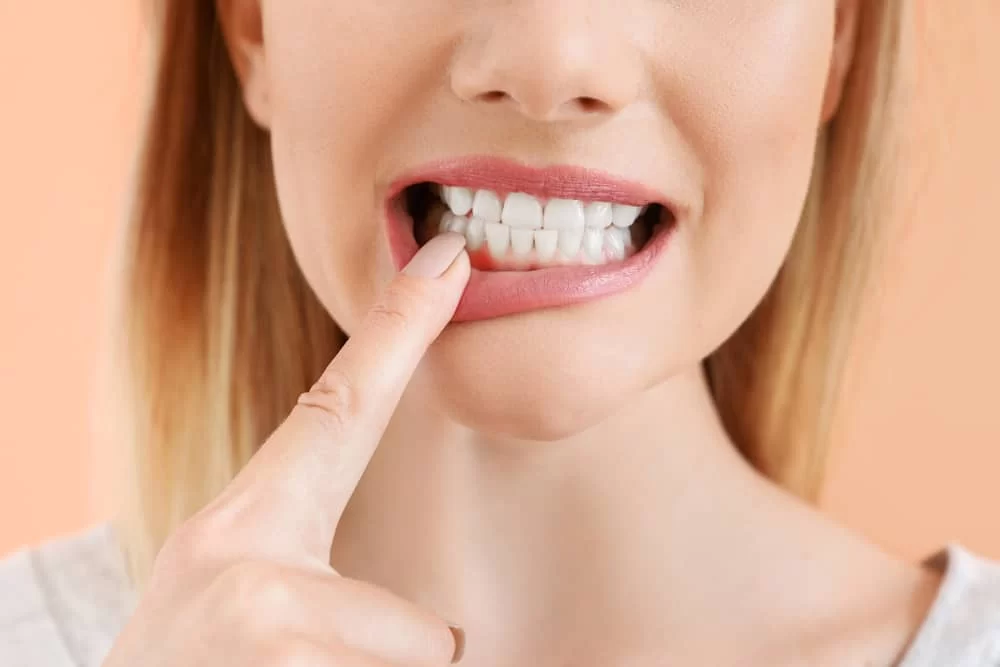
Understanding the Causes of Gum Disease and How to Prevent It: A Complete Guide
- What is Gum Disease?
- What Are the Causes of Gum Disease?
- Types of Gum Disease
- How to Prevent Gum Disease
- Gum Disease Treatment Options
- When to See a Dentist for Gum Disease
What is Gum Disease?
Gum disease, also known as periodontal disease, is an infection of the tissues that surround and support your teeth. It typically begins with gingivitis, which is the inflammation of the gums caused by plaque buildup. If left untreated, it can progress into more serious conditions, such as periodontitis, which can lead to tooth loss.
What Are the Causes of Gum Disease?
Understanding the causes of gum disease is the first step toward preventing it. The main factor behind gum disease is poor oral hygiene, which leads to plaque buildup on teeth. However, several other factors can contribute to the development of gum disease:
- Poor Oral Hygiene: The primary cause of gum disease is inadequate brushing and flossing. When plaque and tartar (hardened plaque) accumulate on your teeth, they cause inflammation and infection in the gums.
- Smoking or Chewing Tobacco: Smoking weakens your immune system, making it harder for your body to fight off a gum infection. It also reduces blood flow to your gums, slowing down the healing process.
- Genetics: Some people may be genetically predisposed to gum disease. If you have a family history of gum disease, you may be at higher risk.
- Hormonal Changes: Pregnancy, menstruation, and menopause can cause changes in hormone levels, which can make gums more susceptible to infection and inflammation.
- Chronic Health Conditions: Conditions like diabetes, heart disease, and autoimmune diseases can weaken your immune system, making it easier for infections like gum disease to develop.
- Medications: Certain medications, including those that reduce saliva production, can contribute to gum disease by making it harder to maintain a clean mouth.
- Poor Nutrition: A diet lacking in essential nutrients, especially vitamin C, can affect your gum health and increase the risk of gum disease.
Types of Gum Disease
Gum disease can range from mild to severe. The two primary types are:
- Gingivitis: This is the earliest stage of gum disease and is usually caused by plaque buildup on the teeth. Symptoms include red, swollen, and bleeding gums. Gingivitis is reversible with proper oral hygiene.
- Periodontitis: If gingivitis is not treated, it can progress to periodontitis. In this stage, the infection spreads to the bone and tissues supporting the teeth, which can lead to tooth mobility and even tooth loss. Periodontitis requires professional treatment to manage the infection and prevent further damage.
How to Prevent Gum Disease
Prevention is always better than treatment. By maintaining good oral hygiene and making some lifestyle changes, you can greatly reduce the risk of developing gum disease:
- Brush Your Teeth Regularly: Brush your teeth at least twice a day using fluoride toothpaste. Be sure to brush along the gumline to remove plaque and bacteria that can lead to gum disease.
- Floss Daily: Flossing is essential for cleaning between your teeth, where a toothbrush can't reach. Regular flossing helps remove plaque and food particles that can cause gum infection.
- Use an Antibacterial Mouthwash: An antibacterial mouthwash can help reduce plaque buildup and control bacteria in your mouth.
- Eat a Balanced Diet: Eating a diet rich in vitamins and minerals, especially vitamin C, can help keep your gums healthy and boost your immune system.
- Quit Smoking: If you smoke, quitting will significantly improve your gum health. Smoking reduces blood flow to your gums and impairs your body’s ability to fight infection.
- Regular Dental Checkups: Visiting your dentist regularly for checkups and professional cleanings will help catch any signs of gum disease early and prevent it from progressing.
Gum Disease Treatment Options
If you already have gum disease, prompt treatment is crucial. The treatment options depend on the severity of the condition:
- Professional Cleanings: Dentists and hygienists can remove plaque and tartar from your teeth, which is essential for treating gingivitis and preventing it from progressing.
- Scaling and Root Planing: This is a deep cleaning procedure used to treat periodontitis. It involves cleaning below the gumline to remove plaque and tartar from the roots of your teeth.
- Antibiotics: In some cases, your dentist may recommend antibiotics to help control bacterial infections that contribute to gum disease.
- Surgical Treatments: In advanced cases, surgical procedures like flap surgery or bone grafts may be necessary to repair damage caused by periodontitis.
When to See a Dentist for Gum Disease
If you notice any signs of gum disease, such as bleeding gums, persistent bad breath, or receding gums, it’s important to seek professional help. Early detection and treatment are key to preventing serious complications like tooth loss.
By understanding the causes of gum disease and adopting preventive measures, you can maintain healthy gums and avoid the discomfort and expense of gum disease treatment. Remember, prevention is the best solution, so start taking care of your gums today!
If you’re looking for products to help with gum health or need professional advice on gum disease prevention, click here to explore the latest solutions and expert recommendations.







 Kangaroo Smiles Pediatric Dentistry and Orthodontics4.0 (1308 review)
Kangaroo Smiles Pediatric Dentistry and Orthodontics4.0 (1308 review) 65 Broadway Dental4.0 (516 review)
65 Broadway Dental4.0 (516 review) Village Family Dentistry4.0 (451 review)
Village Family Dentistry4.0 (451 review) Lake Lanier Smiles4.0 (684 review)
Lake Lanier Smiles4.0 (684 review) Dr. Kwon Pediatric Dentistry - Loganville4.0 (1132 review)
Dr. Kwon Pediatric Dentistry - Loganville4.0 (1132 review) Dr Phillips Periodontics & Implants: Lee Christopher DMD4.0 (53 review)
Dr Phillips Periodontics & Implants: Lee Christopher DMD4.0 (53 review) The Importance of Oral Health Education During Pregnancy for a Healthy Pregnancy
The Importance of Oral Health Education During Pregnancy for a Healthy Pregnancy Best Tips for Brushing Your Teeth Properly for Healthy Gums: Essential Techniques for Oral Health
Best Tips for Brushing Your Teeth Properly for Healthy Gums: Essential Techniques for Oral Health Why Skipping Dental Checkups Can Lead to Bigger Oral Health Problems
Why Skipping Dental Checkups Can Lead to Bigger Oral Health Problems Advantages of Porcelain Dental Restorations
Advantages of Porcelain Dental Restorations How Can Diabetes Cause Tooth and Gum Problems? Preventing and Managing Oral Health Issues
How Can Diabetes Cause Tooth and Gum Problems? Preventing and Managing Oral Health Issues Healthy Habits for Promoting Good Oral Health and Hygiene: Tips for a Healthy Smile
Healthy Habits for Promoting Good Oral Health and Hygiene: Tips for a Healthy Smile